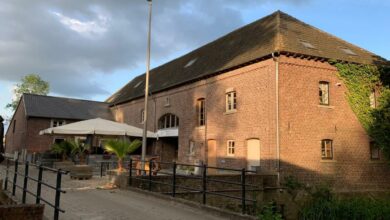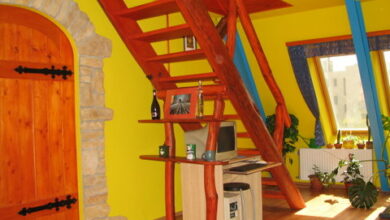
Potatoes go wild : Friesland and potatoes…
Throughout 2018, both Friesland in the northern Netherlands and Valletta in Malta are
European Capital of Culture. The Potatoes Go Wild project illustrates the connection
between these two cities, using potatoes. Perhaps this tuber is the most multicultural
product of Leeuwarden-Friesland 2018!
Much of the world’s potato production starts in Friesland. Every year, seed potatoes from the
province travel around the world to provide food for people. To be able to eat potatoes all
year round and the world over, there are thousands of different varieties. Farmer Djoke
Bierma knows everything about this vitamin bomb. She’s even cultivated her very own
breed, the Sunita. Why did Djoke grow a new variety and what is the perfect potato?
Potatoes and tomatoes
The potato was brought to Europe from Peru or Chile by Spanish explorers in the midsixteenth
century. All potatoes in the world originally come from a single plant that grew in
Peru. From Spain, the plant was spread over the rest of Europe by monks. By the end of the
sixteenth century the potato had finally reached the Netherlands. At first the crop was only
used in botanical and monastic gardens because it was thought to be toxic. The plant and
berries, after all, contain poison. It was not until 1727 in Friesland that the potato was first
recognised as food. Since then it has prevented countless famines and considered a miracle
cure in the shipping industry. It prevents scurvy thanks to the large amount of vitamin C. Did
you know that the plant is a family member of the tomato?
Today, an area in Northeast Friesland known as Het Bildt, is the potato headquarters of the
Netherlands. Tens of thousands of seed potatoes are grown here each year. 1,400 hectares
are planted annually with 85,000 tuber
Brothers and sisters
In the search for a new and better variety, a grower looks for plants with the desired
characteristics of potatoes that are crossed, the genitors. A potato is tetraploid, which means
that each cell has four sets of chromosomes. The more chromosomes there are, the more
variations there can be when crossing, and the harder it becomes to predict what the result
will be.
“If you are going to cross plants, the plant will form berries containing seeds after pollination.
Much like small tomatoes. After sowing the berries, there are small tubers that together form
a large group of brothers and sisters. They have the same parents, but are however very
different. This makes it difficult to find the right offspring with the characteristics you are
looking for.” Djoke shows a crate of potatoes with all kinds of colours and shapes. “All of
these are brothers and sisters. They are about to go into production before their first year.”
After the first year, you select the best ten to fifteen percent that you want to continue with.
After the second and third year you do the same. If you have a good potato, the HZPC – a
trading and breeding company Djoke collaborates with – will check whether the potato also
grows well in the sandy soil of Appelscha and in the polder. If so, it will be tested in countries
where it may be possible to market the potato. HZPC tests whether it grows well there and
whether the competition is limited. It may well be that you have made a good potato but that
there is simply no demand for it. Before you know whether a seed is a suitable variety,
you’re at the least ten years down the road.”
Creating a new breed is advanced mathematics. “Its resistance to diseases must be in good
order. Unfortunately, it has not yet been possible to make potatoes resistant to all diseases.
That’s why preventive pesticides are still used. Genetic modification may be the solution, but
is not yet allowed here. In America, for example, this is already happening.”
Naming your own tuber
The name doesn’t simply fall from the sky either. The grower may submit ideas, but an
investigation is carried out to see whether these do not yet exist or are similar to other ideas.
It is important that the name can be pronounced in the countries where it’s going to. It may
happen that a name has a negative connotation, for example if it is named after a politician.
“It’s unique that a name I came up with myself has also become the name of the potato,”
says Djoke. “I saw the maiden name Sunita in a magazine. I was looking for a name with
‘sun’ in it because of the beautiful yellow cooking colour of the potato.”
A potato must also be classified. This is done through old-fashioned tasting. “I’m in the
kitchen most during autumn,” says Djoke. “I cook the potato, bake it, make chips and crisps
with it and take in the colour and flavour. Sunita is a slightly crumbly potato that is ripe early
on. This means that it can be harvested early in the year. It is a fairly sturdy potato with a
beautiful and firm skin. A versatile potato, great for cooking, baking and for the oven. You
can also make excellent homemade chips with them.”
On the shelves
You never know where your potatoes will end up. “It was really nice to suddenly see them on
the shelves of Albert Heijn,” says Djoke with a sense of pride. He places a bag of light-
crumbly potatoes from the supermarket on the table. The breed is labelled on the bottom:
Sunita. Meanwhile, the potato is being stocked on supermarket shelves throughout Europe.
Discover the farm
During the Capital of Culture, a link is made between the two Capitals of Culture:
Leeuwarden-Friesland in the Netherlands and Valletta in Malta. The first potatoes of the year
went to Malta as seed potatoes in the autumn of 2017 and recently returned as ware
potatoes. This creates a close connection between the two cities.
The Bierma farm is a participant in LF2018’s Potatoes Go Wild. Four artists will be exhibiting
in the iconic American barn, dating back to 1920. In addition, a walking tour through the
country is organised to preserve the village’s grain mill, and the farm joins Ete bij de boer XL
on the 23rd of June. Djoke hopes the new Sunita’s harvest will be available during the potato
weeks from 21 June to 15 July. “We are proud of our company, which has been in the family
since 1872. People see what happens on land during the summer, but hardly anyone knows
what a farmer does in winter. All year round, really great things are happening and we are
eager to show it.”




